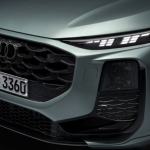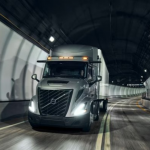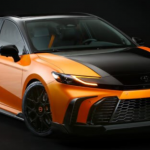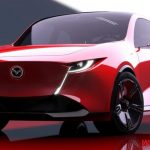The electric SUV segment in India is heating up in 2025, and two giants are leading the charge — Tata Harrier EV and Mahindra XEV 9e (XUV.e9). These models represent a bold step forward for both companies as they battle it out for dominance in the premium electric SUV space.
While Tata Motors has already proven its EV leadership with the Nexon EV and Tiago EV, Mahindra is ready to challenge with its Born Electric range — especially the futuristic XEV 9e, based on the XUV.e9 concept.
This blog gives you a complete side-by-side comparison of Tata Harrier EV vs Mahindra XEV 9e, covering:
- Price and positioning
- Design language
- Battery capacity and range
- Features and technology
- Performance and driving dynamics
- Verdict: Which one should you choose?
💰 Price and Expected Launch Timeline
| Feature | Tata Harrier EV | Mahindra XEV 9e (XUV.e9) |
|---|---|---|
| Expected Price | ₹28 – ₹32 Lakhs (ex-showroom) | ₹30 – ₹35 Lakhs (ex-showroom) |
| Launch Timeline | Late 2025 | Late 2025 |
| Positioning | Mid-size premium electric SUV | Full-size futuristic electric SUV |
Both SUVs are expected to launch by the end of 2025. The Harrier EV may arrive slightly earlier, while the Mahindra XEV 9e will follow as part of Mahindra’s “Born Electric” lineup.
🚙 Design and Exterior Styling
🟢 Tata Harrier EV:
- Evolution of the ICE Harrier with modern EV-specific updates
- Closed-off grille, LED DRLs, redesigned bumpers
- Futuristic connected LED tail lamps
- Stylish aero-efficient wheels
🔵 Mahindra XEV 9e (XUV.e9):
- Based on INGLO EV platform
- Coupe-like roofline, sharp creases, bold LED strip lights
- Dual-tone roof, illuminated logos, and futuristic front fascia
- High stance and long wheelbase
Verdict on Design:
While Tata retains its rugged Harrier DNA, Mahindra’s XEV 9e takes a bold leap with a concept-to-production futuristic design that may appeal more to younger buyers and tech lovers.
🔋 Battery, Range, and Charging
| Feature | Tata Harrier EV | Mahindra XEV 9e |
|---|---|---|
| Battery Pack | ~60–70 kWh | ~80 kWh (as per concept spec) |
| Range (Expected) | 500+ km | 450–500 km |
| Platform | Modified Omega Arc with Ziptron | Born Electric (INGLO) |
| Charging (DC Fast) | ~30 min (0-80%) | ~30 min (0-80%) |
Both vehicles are likely to support DC fast charging and vehicle-to-load (V2L) functionality. The Harrier may use Tata’s trusted Ziptron tech, while the XEV 9e benefits from a new skateboard architecture with higher energy density.
Verdict on Battery and Range:
The Harrier EV may deliver slightly better real-world efficiency, but Mahindra’s bigger battery and newer platform might offer more advanced energy management.

⚙️ Performance and Driving Dynamics
| Parameter | Tata Harrier EV | Mahindra XEV 9e |
|---|---|---|
| Motor Type | Dual Motor (AWD expected) | Dual Motor AWD (based on INGLO) |
| Acceleration (0-100) | ~8 seconds (estimated) | 6–7 seconds (estimated) |
| Driving Modes | Eco, City, Sport | Personalised Modes via UI |
| Platform Advantage | Retrofitted from ICE model | Born Electric – flat floor chassis |
Verdict on Performance:
Mahindra may win the edge here with better dynamics, lower center of gravity, and quicker acceleration thanks to its Born Electric platform.
🎮 Interior and Technology
🟢 Tata Harrier EV:
- Similar layout to new Harrier ICE facelift
- 12.3-inch touchscreen, 10.25-inch digital cluster
- 360° camera, wireless Android Auto/Apple CarPlay
- ADAS Level 2, panoramic sunroof
- Connected car tech via iRA
🔵 Mahindra XEV 9e:
- Triple screen dashboard (as seen in XUV.e9 concept)
- Integrated AI-powered infotainment
- Smart ambient lighting
- ADAS Level 2+, AR-based navigation
- Sustainable materials and flat floor interior
Verdict on Features:
While Tata offers premium practicality, Mahindra is aiming for wow factor and innovation, targeting tech-savvy urban users.
🔐 Safety and Build Quality
Both SUVs are expected to come with:
- 6 to 7 airbags
- ESC, Hill Hold, TPMS, All-Disc Brakes
- ADAS features (adaptive cruise, lane assist, auto braking)
- Strong monocoque platforms with high crash resistance
Tata has a strong record with 5-star safety ratings. Mahindra is expected to match or exceed those standards with its new INGLO platform.
🧾 Summary: Side-by-Side Comparison Table
| Feature | Tata Harrier EV | Mahindra XEV 9e |
|---|---|---|
| Price (Expected) | ₹28–32 Lakhs | ₹30–35 Lakhs |
| Range | 500+ km | 450–500 km |
| Platform | Modified ICE | Born Electric (INGLO) |
| Design | Premium SUV look | Futuristic, coupe-like |
| Performance | Good (AWD optional) | Sporty and dynamic |
| Interior Tech | Feature-rich | Innovation-driven |
| ADAS & Safety | Level 2 | Level 2+ |
| Charging | Fast Charging (DC) | Fast Charging (DC + V2L) |
✅ Final Verdict: Which SUV Should You Choose?
- Choose Tata Harrier EV if:
✅ You trust Tata’s proven EV tech and safety
✅ You prefer traditional SUV looks with modern features
✅ You want slightly better range and cost-effectiveness - Choose Mahindra XEV 9e if:
✅ You love futuristic designs and tech integration
✅ You want stronger performance and a ground-up EV platform
✅ You seek a feature-loaded, next-gen driving experience
🏁 Conclusion
The Tata Harrier EV and Mahindra XEV 9e represent two distinct philosophies in India’s premium electric SUV segment. Tata plays it smart and safe with a familiar yet electric offering, while Mahindra pushes the envelope with a radical design and architecture-first approach.
No matter which one you pick, 2025 is shaping up to be an exciting year for electric mobility in India. Both these SUVs are set to redefine expectations in their own way.
Let me know if you’d like:
- A visual infographic comparison
- A poster template for auto showrooms
- Or a YouTube script based on this blog!

Hello, my name is Muskan Kumari and I am an experienced Digital Marketer. I have been blogging for the last 3 years and I have special interest in SEO. Here I give you easy bikes and writes easy-to-understand reviews and news about the latest bikes, helping readers choose the best options.. My aim is to always provide you with accurate, new and useful information.










